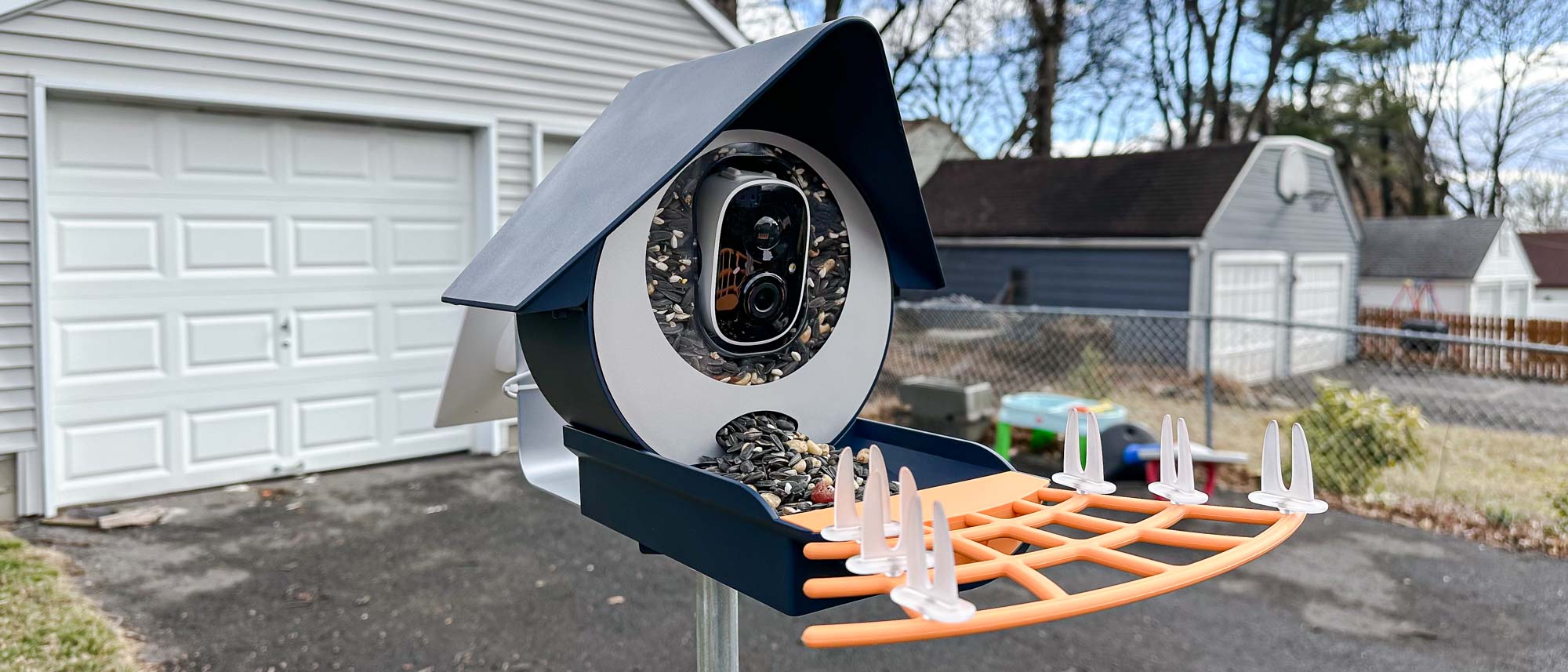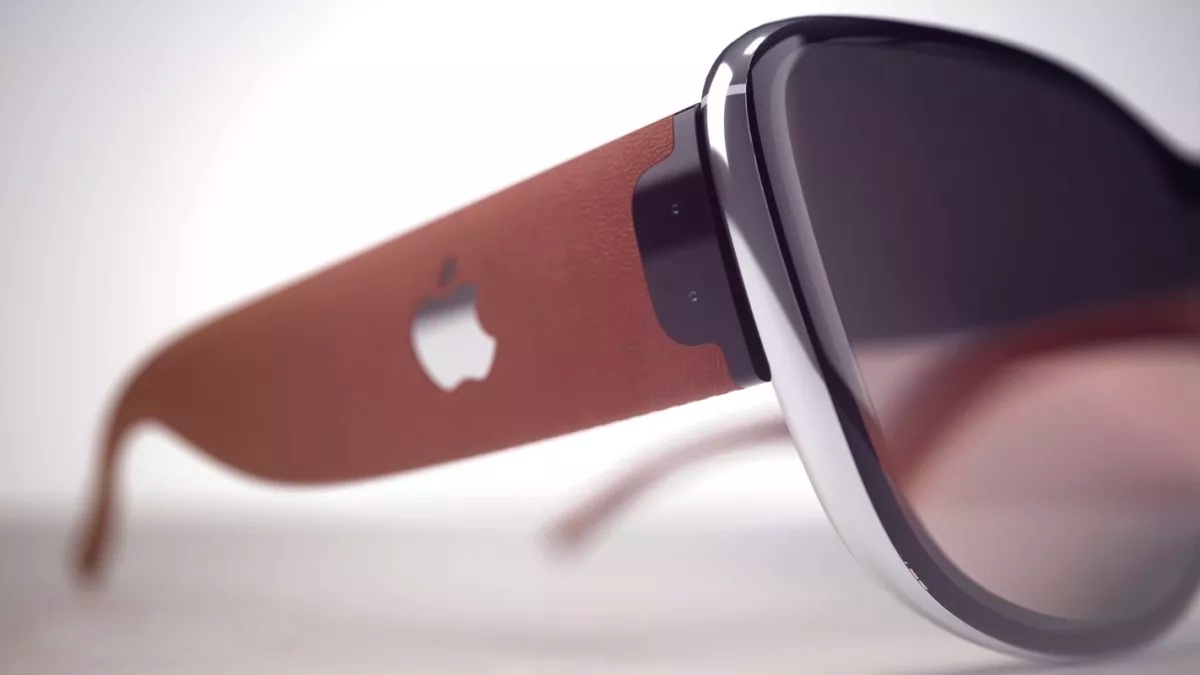Tom's Guide Verdict
The BirdKiss smart bird feeder delivers high-quality video and its AI is excellent at identifying birds, but it requires a subscription for these features, whereas its only competitor, the Bird Buddy, does not.
Pros
- +
Very accurate bird identification
- +
Can also ID people, vehicles, and packages
- +
Good quality video
Cons
- -
Subscription required to identify birds
Why you can trust Tom's Guide
Have you ever looked at your bird feeder and wondered just what birds are coming by, or wished that you were able to get a close-up look at some rare species? The BirdKiss smart bird feeder lets you do just that. Essentially a bird feeder built around a home security camera, the BirdKiss also has an AI that can identify — with great accuracy — the birds it records.
The BirdKiss is one of two smart bird feeders on the market, so how well does it work, and how does it compare to its only rival, the Bird Buddy? Read the rest of this BirdKiss review to find out.
BirdKiss review: Price and availability
The BirdKiss smart bird feeder went on sale in early 2023, and is available for $229. The kit comes with the feeder, a mounting bracket, a solar panel, and an external antenna.
However, to get the most out of the feeder — such as alerts for when and what kind of birds are at your feeder — you’ll also need to subscribe to one of three plans: The Basic Plan ($2.99/month, $31.99/year gets you 15 days of cloud recordings; the Plus Plan ($4.49/month, $49.99/year) gets you 30 days of recordings; and the Pro Plan ($7.99/month, $94.99/year) gets you 60 days of video.
BirdKiss’ only competition at the moment is the Bird Buddy, another bird feeder-with-camera. It starts at $199, but a model with a solar roof costs $269. A wall mount is sold separately for $24.99. A Pro Bundle, which includes the solar roof, the mounting bracket, a suet ball holder, and a water bottle, costs $329.
But while the Bird Buddy has a higher initial cost, there’s no extra fee to save video or to have it identify bird species.
BirdKiss review: Design
The BirdKiss looks more like a bird house than a bird feeder, and bears more than a passing resemblance to its only rival, the Bird Buddy. In the middle of the BirdKiss is a security camera. Unlike the Bird Buddy, which seems to have a bespoke design, the BirdKiss simply sourced a camera from a third-party manufacturer. I found it on Amazon for $59.
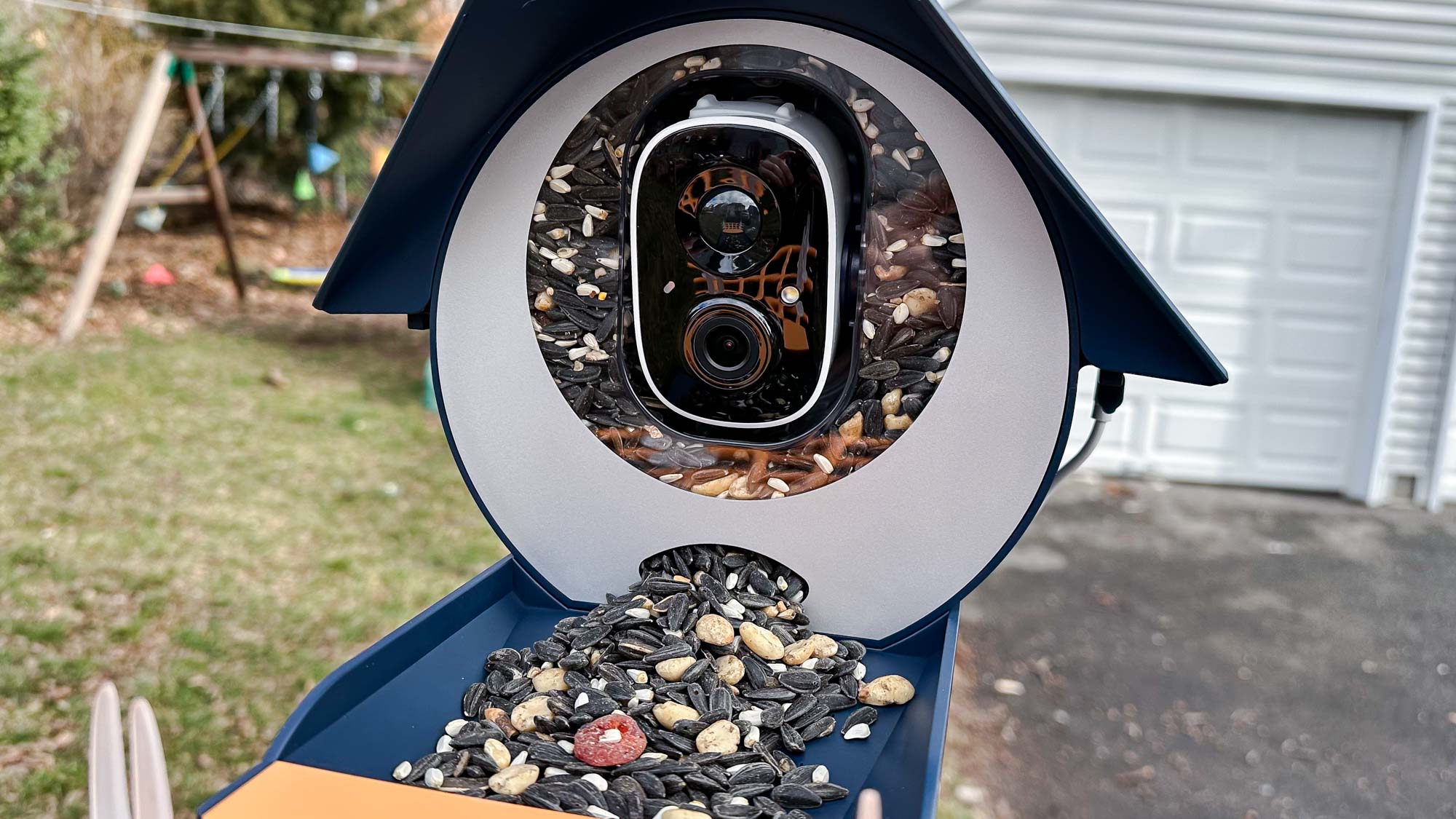
The main part of the BirdKiss is made of clear plastic, so you can easily see when it needs to be refilled with birdseed; its angled plastic roof pops off easily, but remained firmly in place when closed.
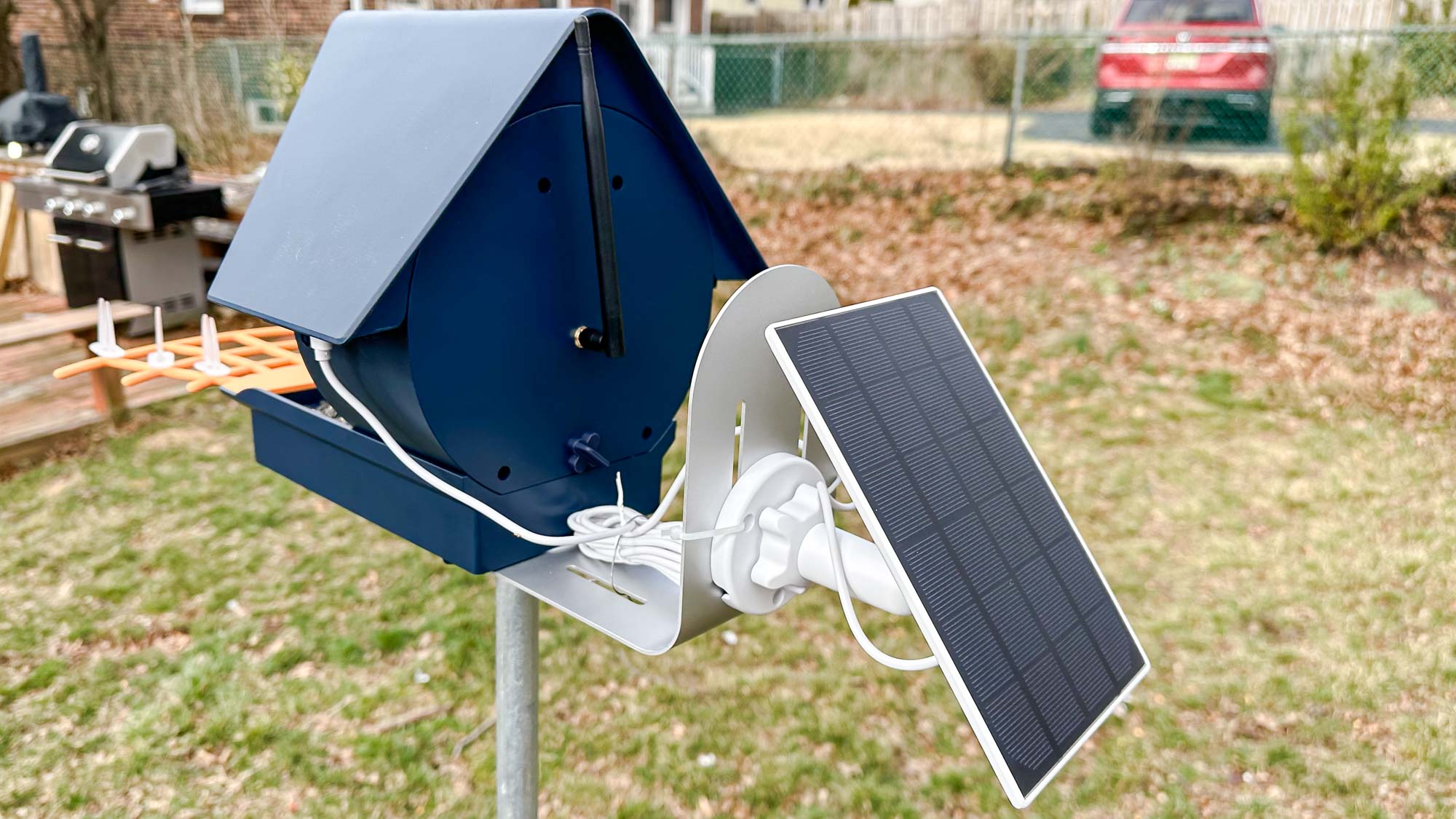
Unlike the Bird Buddy, you can’t buy a roof with a built-in solar panel for the BirdKiss. Instead, it ships with a separate solar panel that plugs into a USB-C port on the feeder. It’s a much less elegant design, but gives you greater flexibility if the feeder itself is mounted in a shaded area. I also think that the BirdKiss’ removable, external Wi-Fi antenna is another potential failure point, but it does give you a bit greater range from your router.
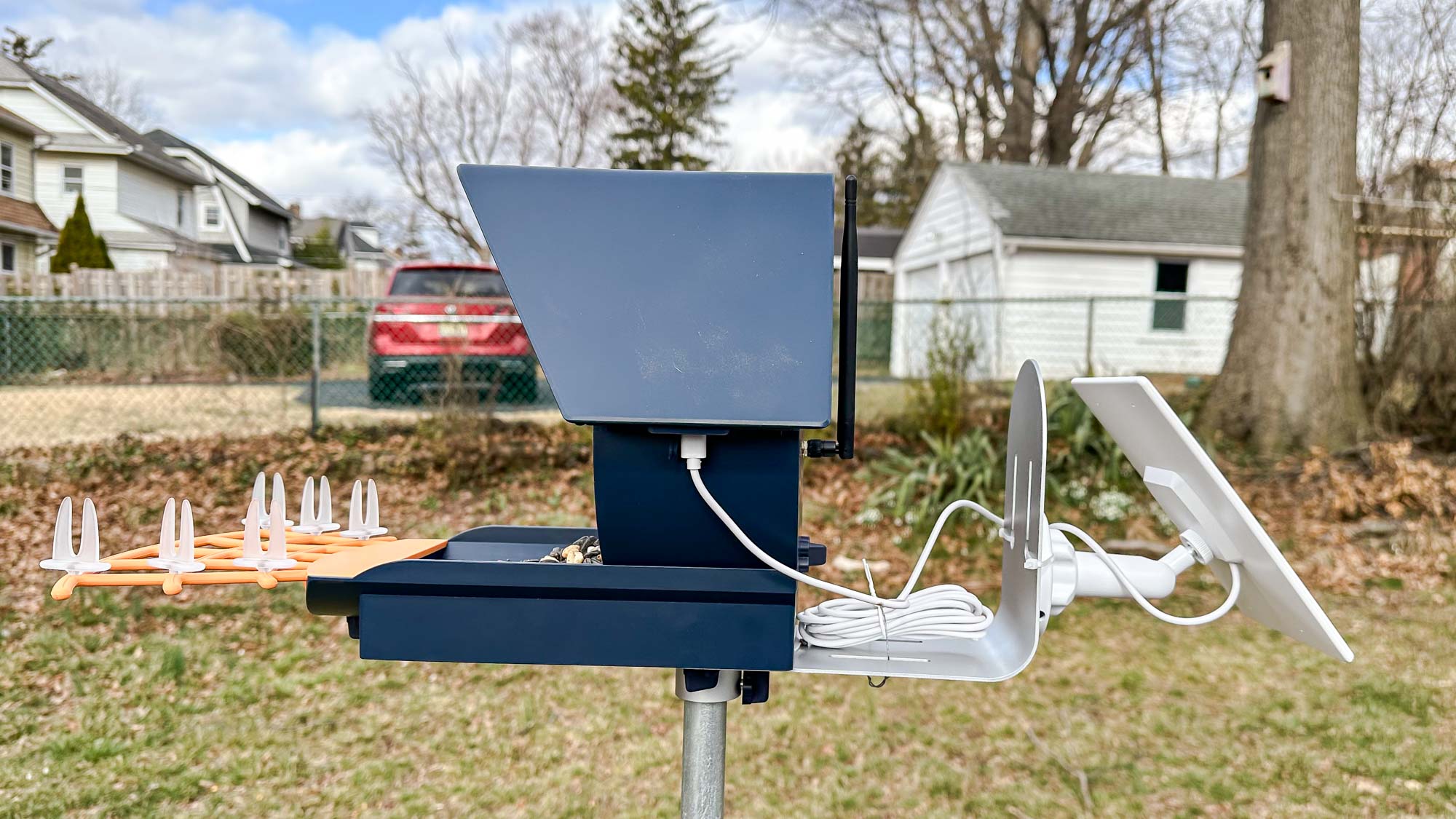
I set up the BirdKiss on a metal pole in the middle of my yard, but also used the tree mounting bracket to hold the solar panel. It’s not the prettiest of setups, but it works.
BirdKiss review: Video quality, bird identification, and battery life
The 1080p camera in the BirdKiss delivered some excellent video of all the birds that came to the feeder. I was able to pick out individual feathers of all the sparrows, cardinals, woodpeckers, and assorted fowl.
The camera occasionally had a little trouble when the sun came into its field of view, but for the most part, the photos and videos were clean and clear. The camera’s microphones also picked up the chirps of the visitors perfectly, too.
I used the BirdKiss for several weeks with the solar panel attached; at first, I set the camera to be on all the time, and set the video quality to HD, but found that the battery drained faster than the solar panel could replenish it. Adjusting the quality to SD, and having the camera automatically turn off at night allowed it to stay fully charged.
BirdKiss review: App
The BirdKiss uses a camera and app made by VicoHome, so it works like many of the best home security cameras. Within the app, you can have it send you alerts for pets, people, vehicles, and packages (and birds, too). It even gets pretty granular; for example, I could set the app to alert me when a vehicle was approaching or leaving, when a package was delivered, or when a package was taken away.
You can also create activity zones, so it will only alert you to events in particular areas of its view. I also liked that I could adjust the length of the recording, and even save videos to a local microSD card in the bird feeder itself.
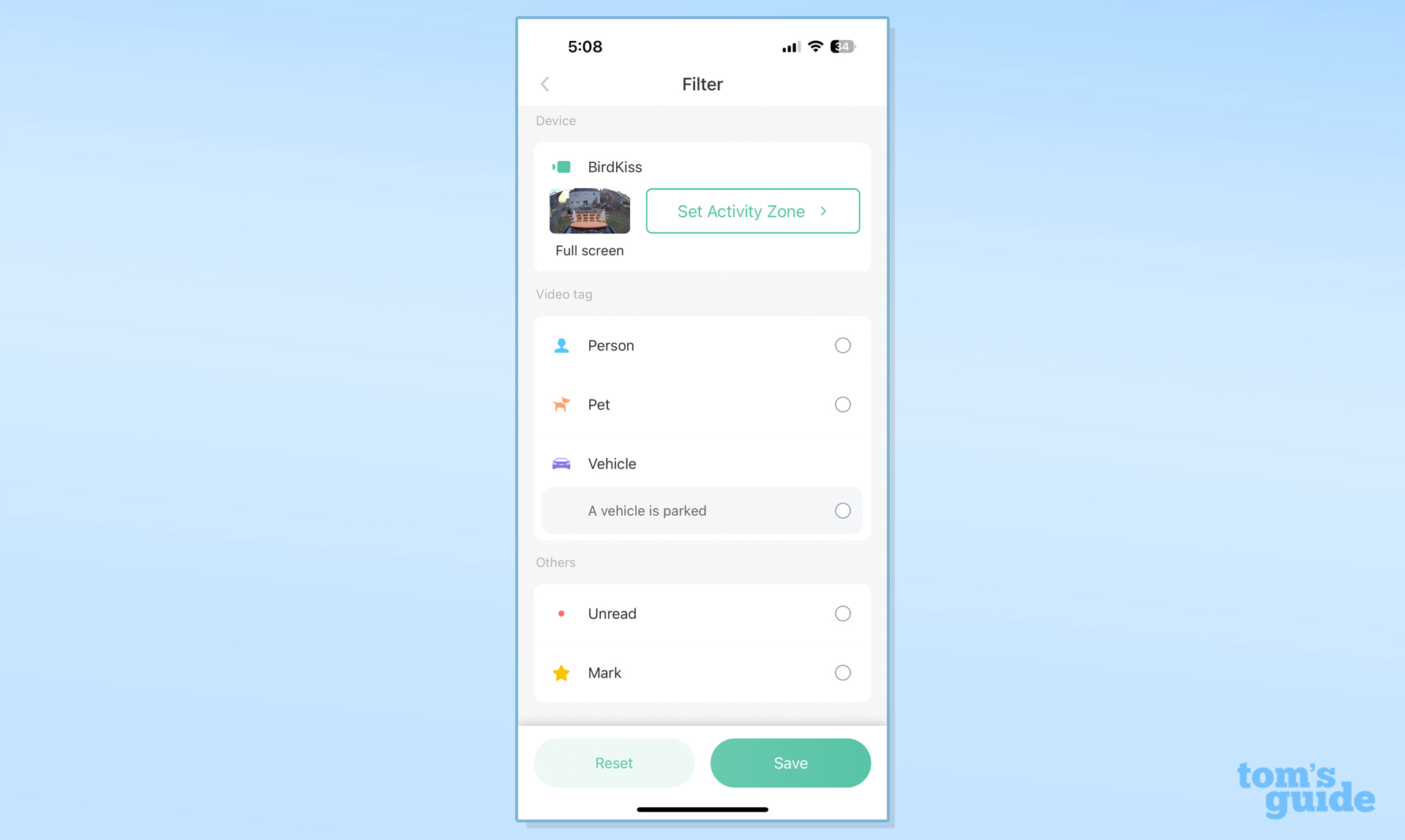
The BirdKiss app was pretty accurate when identifying the various bird species that alit upon the feeder. The app typically displayed three birds, with a percentage bar underneath each showing how confident it was in the match. I wish the app were smart enough to know the region I lived in, so it could automatically rule out certain birds. For instance, it would occasionally identify a Northern Cardinal as a Pyrrhuloxia; the latter is closely related, but only lives in the southwestern U.S. — on the other side of the country from where I am.
If you tap on the bird name, another screen opens that provides detailed information about that bird, which is taken directly from Wikipedia. In fact, a "View more information" button at the bottom takes you to the Wikipedia page itself.
By comparison, the Bird Buddy app gives you a complete description of the bird, and can play a recording of its song. It also creates a gallery of each species of bird that comes to the feeder.
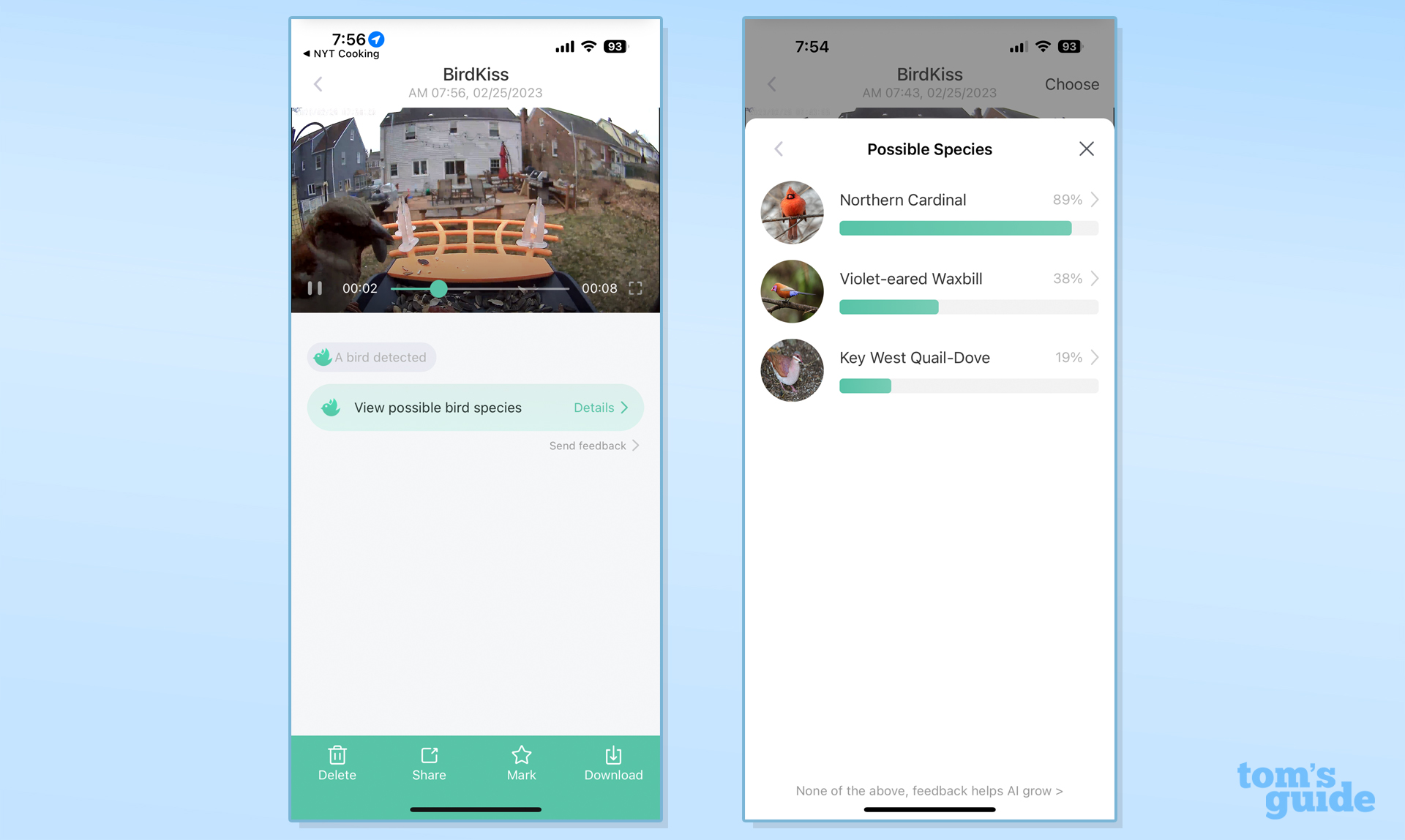
Unlike the BirdKiss app, the Bird Buddy doesn’t send you alerts for anything other than birds, which makes sense. Why pay for features you don’t need, like vehicle and package detection? On the other hand, the BirdKiss can act as a sort of hidden outdoor security camera.
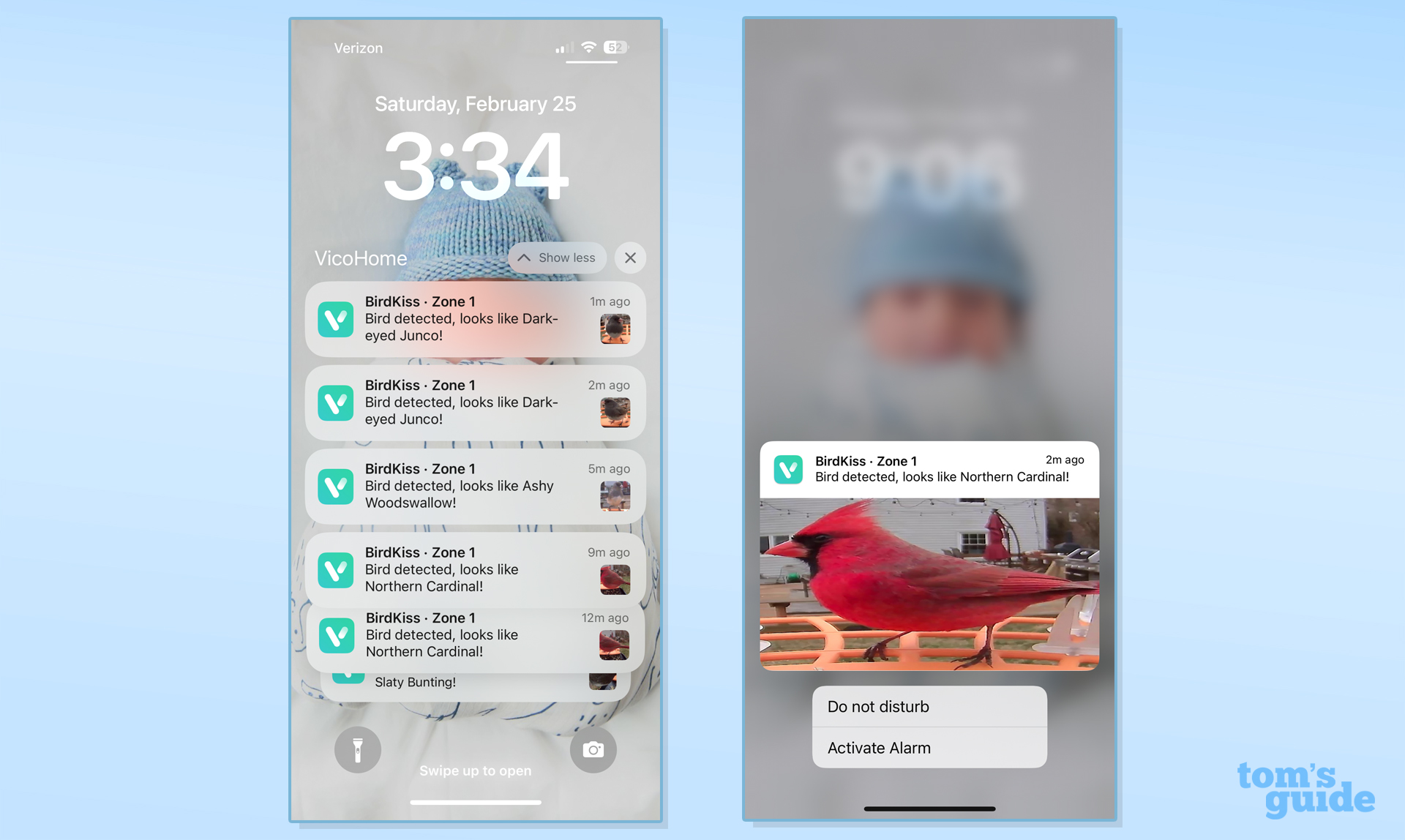
The VicoHome app has an Alexa skill, so you could potentially view a feed from the BirdKiss on an Alexa-enabled smart display, such as the Echo Show 15. However, the skill is not fully enabled, so it doesn’t work at the moment. It’s a shame, as that feature would help distinguish the BirdKiss from the Bird Buddy.
BirdKiss review: Verdict
Before the BirdKiss came along, I made an ad-hoc smart bird feeder once by rigging a Blink Outdoor camera to a pole near my feeder (this was before a company started making a dedicated bird feeder house for the camera). But, being able to get an accurate ID of the birds themselves adds a fun extra dimension.
During the weeks I tested the BirdKiss, I found that it was easy to install, was very accurate when IDing birds, and delivered great video, too. However, its only main rival, the Bird Buddy, does all that, gives you more information about each bird — and doesn’t charge a subscription. The BirdKiss does track other things, such as people, vehicles, and packages, but are you really looking for those features in a smart bird feeder?

Michael A. Prospero is the U.S. Editor-in-Chief for Tom’s Guide. He oversees all evergreen content and oversees the Homes, Smart Home, and Fitness/Wearables categories for the site. In his spare time, he also tests out the latest drones, electric scooters, and smart home gadgets, such as video doorbells. Before his tenure at Tom's Guide, he was the Reviews Editor for Laptop Magazine, a reporter at Fast Company, the Times of Trenton, and, many eons back, an intern at George magazine. He received his undergraduate degree from Boston College, where he worked on the campus newspaper The Heights, and then attended the Columbia University school of Journalism. When he’s not testing out the latest running watch, electric scooter, or skiing or training for a marathon, he’s probably using the latest sous vide machine, smoker, or pizza oven, to the delight — or chagrin — of his family.
